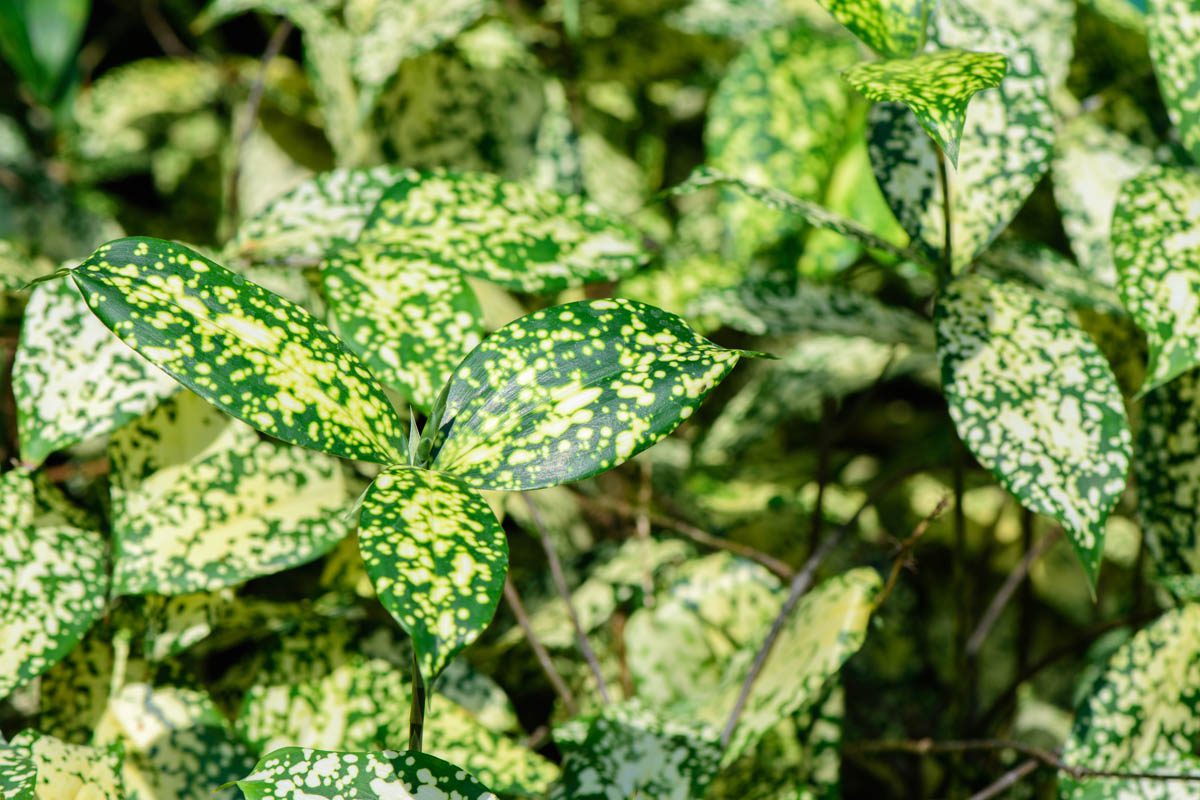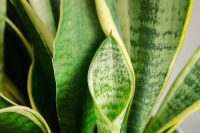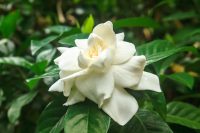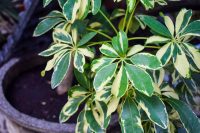Gold dust dracaena (Dracaena surculosa) is toxic to dogs. The toxic principle is steroidal saponins which cause vomiting, loss of appetite, depression, hypersalivation and incoordination.
What is gold dust dracaena?
| Family | Agavaceae |
| Botanical name | Dracaena surculosa |
| Common names | Gold dust dracaena, Spotted dracaena, Japanese bamboo, Florida beauty |
| Toxicity | Toxic to dogs |
| Toxic parts | All parts |
| Toxic principle | Steroidal saponins |
| Severity | Mild to moderate |
Gold dust dracaena (Dracaena surculosa) is a small, slender shrub native to west and west-central tropical Africa, from Guinea to the Republic of the Congo. The name gold dust is derived from the decorative gold splashes on the leaves which turn white as the plant ages.
Dracaena plants make exceptional indoor ornamental plants, prized for their evergreen foliage and ease of care. Their preferred location is partial sun, and they should be watered when the top 3 cm of soil has dried out.
Toxic properties
The ASPCA lists the toxic principle as unknown, however, one investigation isolated nine steroidal saponins in gold dust dracaena. Saponins are bitter-tasting, amphiphilic glycosides of steroids and triterpenes widely distributed in the plant kingdom. The bitter taste of saponins acts as an antifeedant, deterring insects and larger animals from chewing the plant. In addition, saponins are heterocides, with the ability to kill insects by inhibiting food intake, interfering with growth and preventing cholesterol absorption.
Clinical signs
- Loss of appetite
- Depression
- Hypersalivation
- Vomiting
- Weakness
- Incoordination
First aid
Remove any remaining plant matter from the dog’s mouth if it is safe to do so and offer a drink of something tasty such as milk. Contact your dog’s primary veterinarian or an emergency after-hours veterinarian and let them know your dog has consumed gold dust dracaena. If the dog appears otherwise well, they may recommend a wait-and-see approach. Do not attempt to induce vomiting unless the veterinarian has instructed you do so.
Treatment
There is no antidote to gold dust dracaena ingestion and the goal of treatment is to prevent further saponin absorption as well as manage clinical signs.
If ingestion was recent, the veterinarian may administer a medication to induce vomiting followed by activated charcoal which will bind to any remaining plant matter in the gastrointestinal tract.
Antiemetics and gastric protectants can be administered to cats who are vomiting, as well as intravenous fluids to prevent or treat dehydration and electrolyte derangements.
Prognosis
Most dogs will make a full recovery.
Julia is a writer and landscape consultant from Wollongong with a love of horticulture. She had been an avid gardener for over 30 years, collects rare variegated plants and is a home orchardist. Julia is passionate about learning and sharing her knowledge of plant propagation and plant toxicology. Whether it’s giving advice on landscape projects or sharing tips on growing, Julia enjoys helping people make their gardens flourish.




